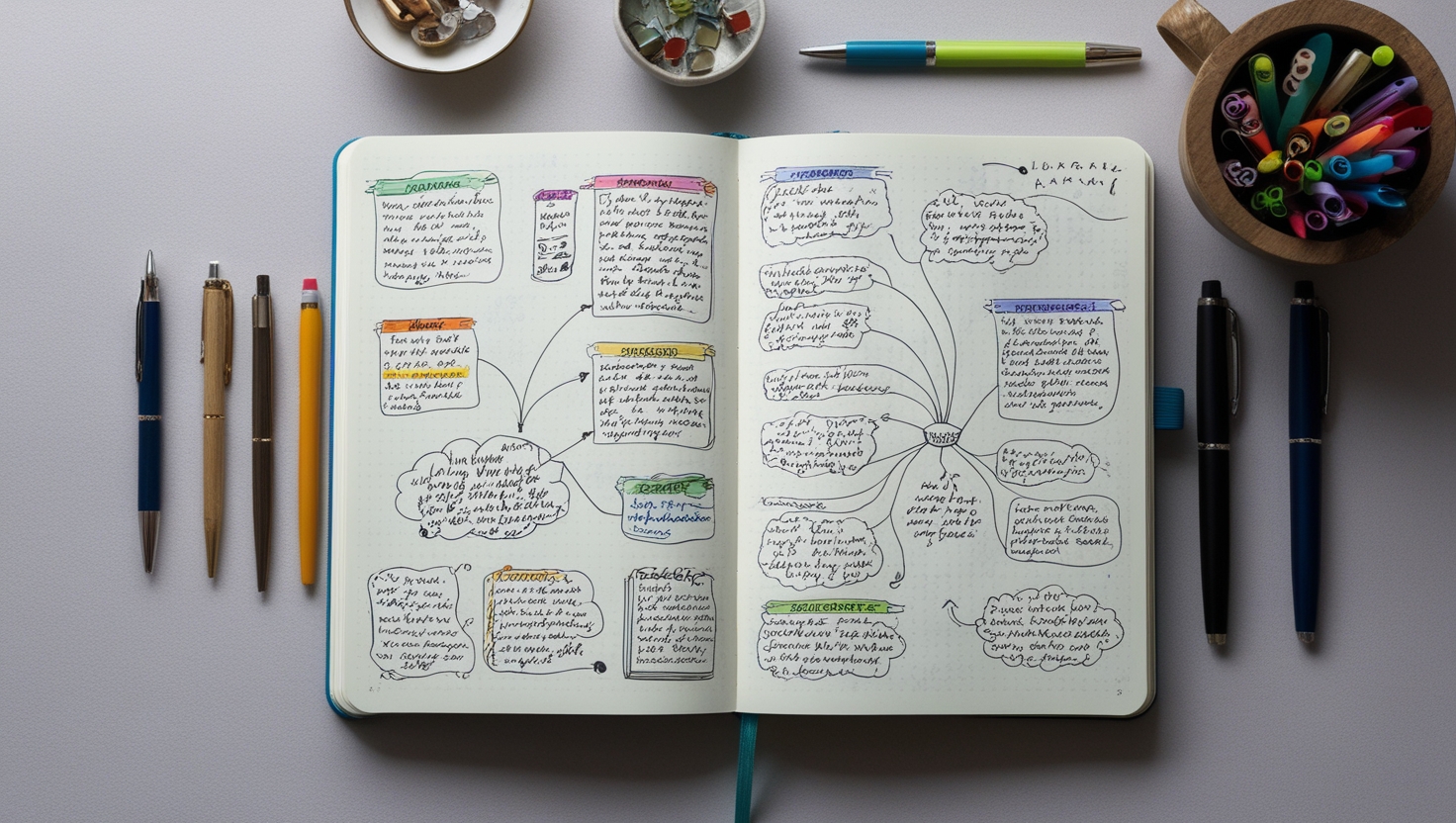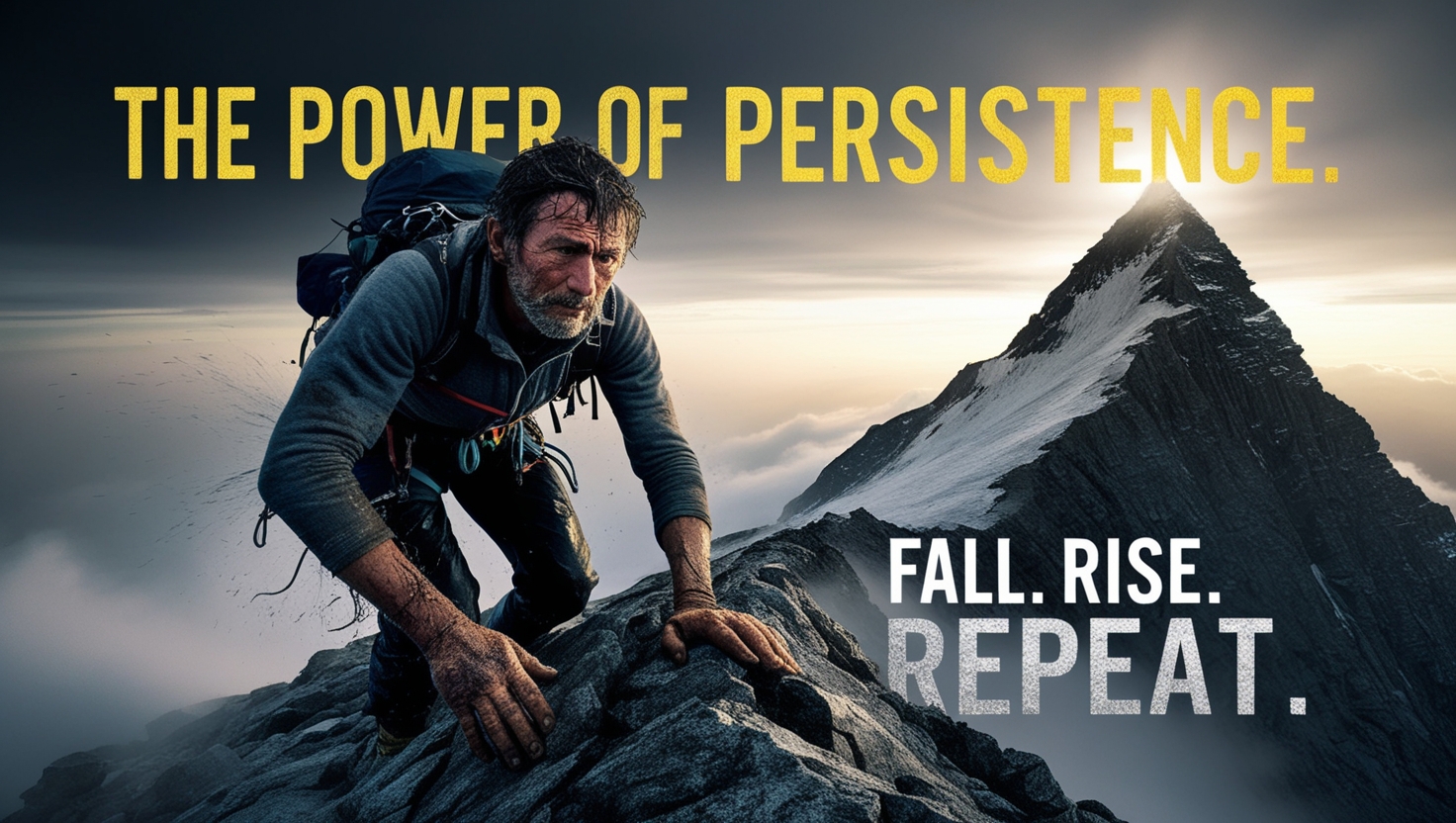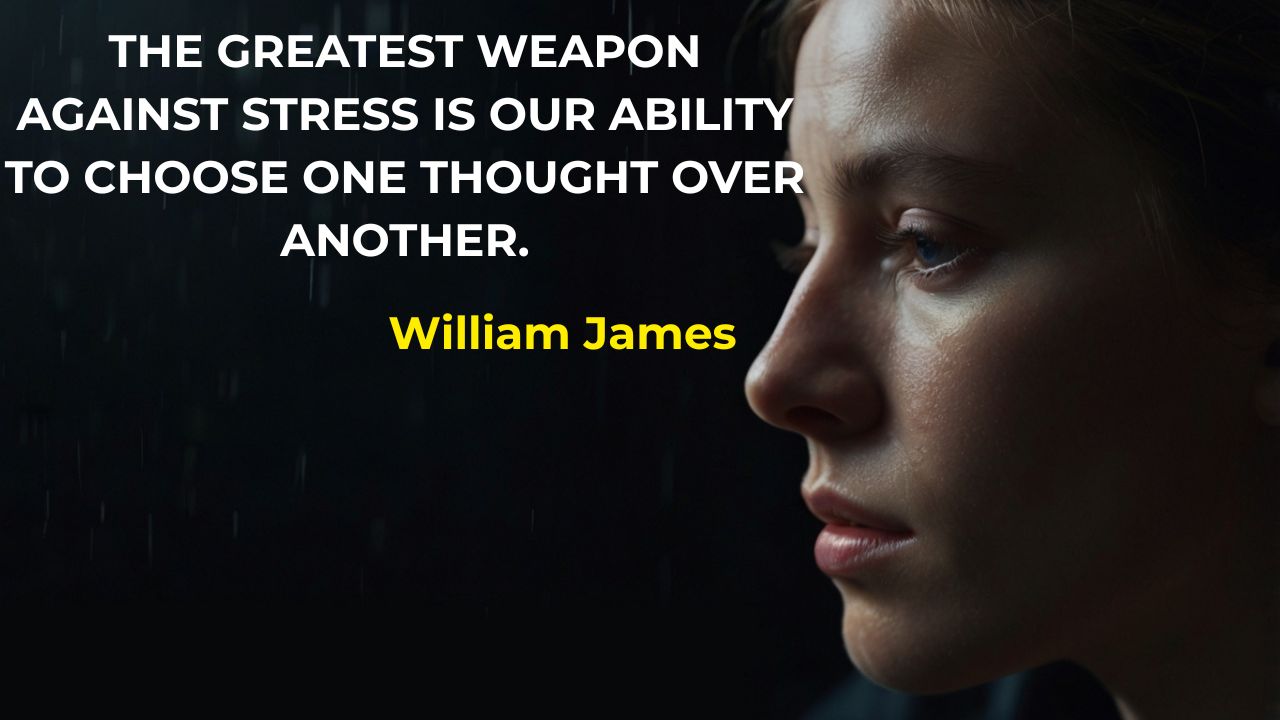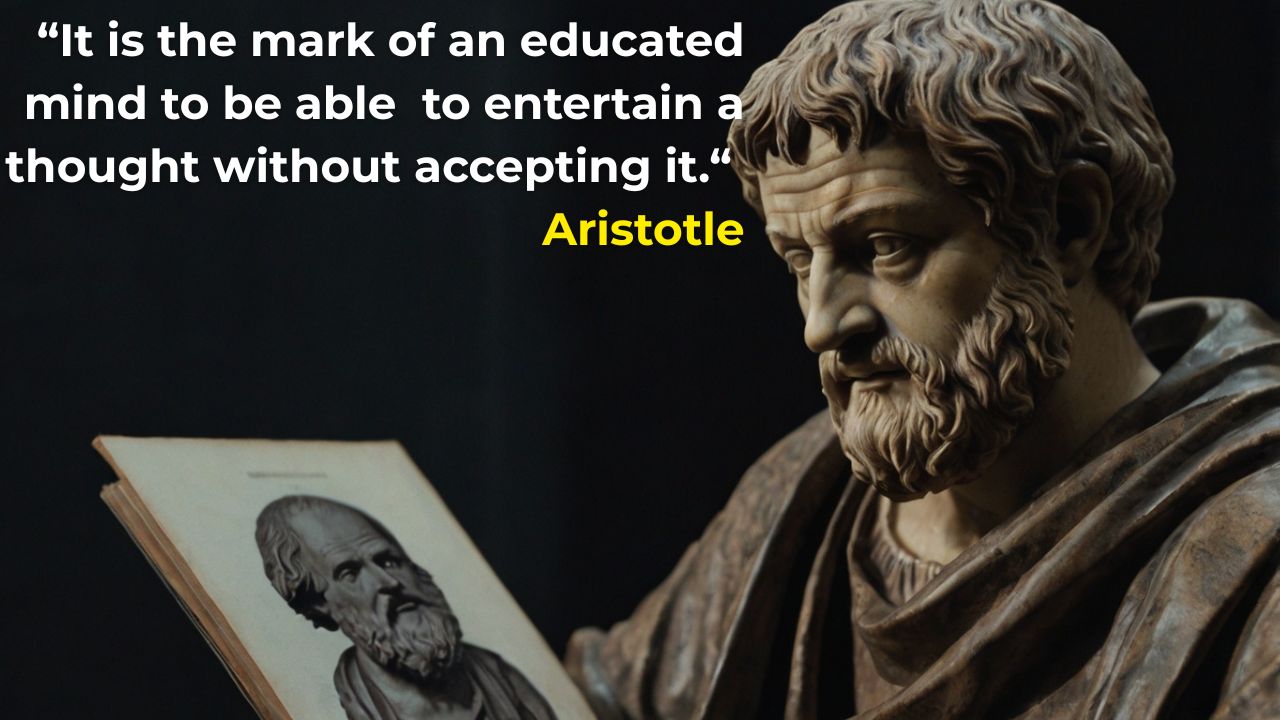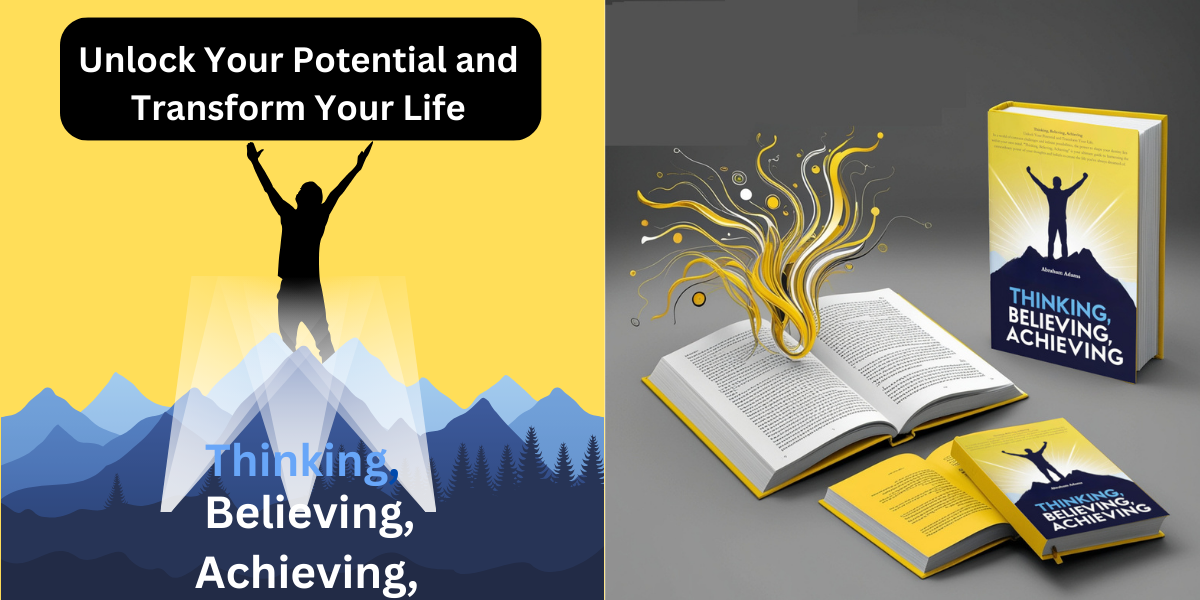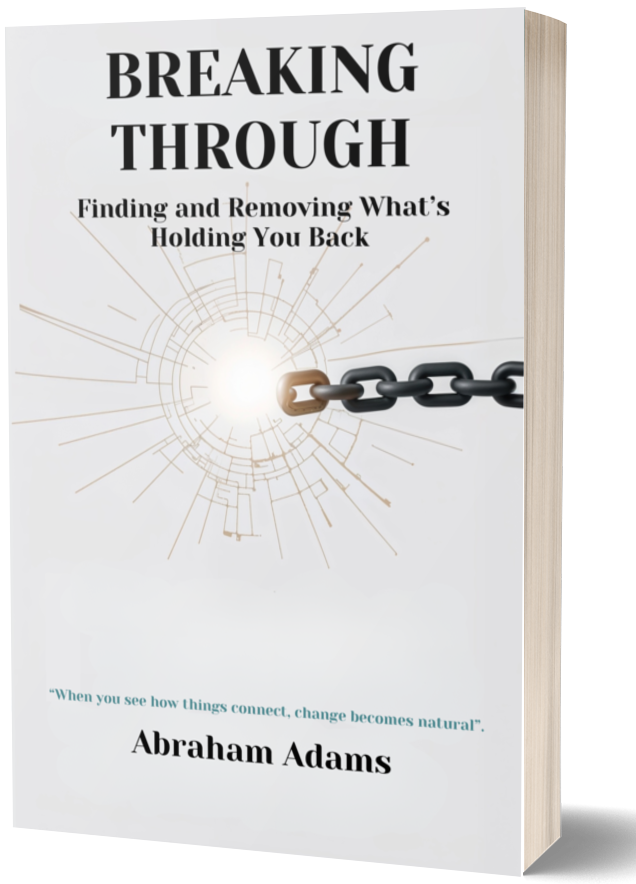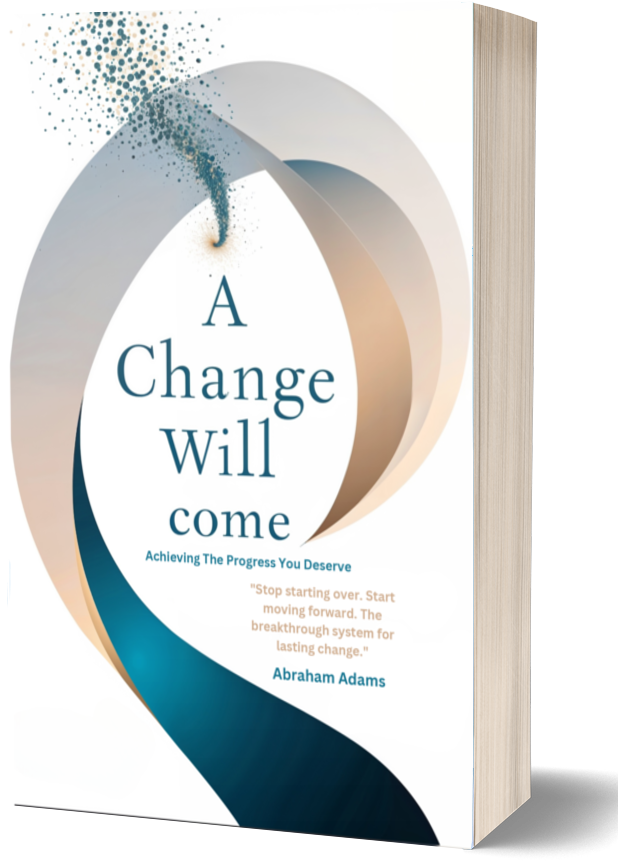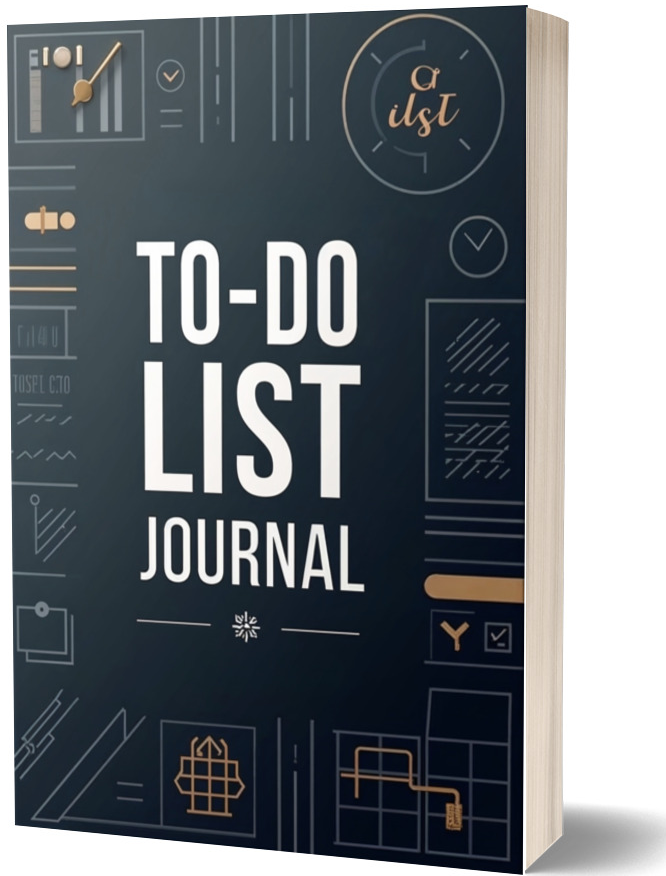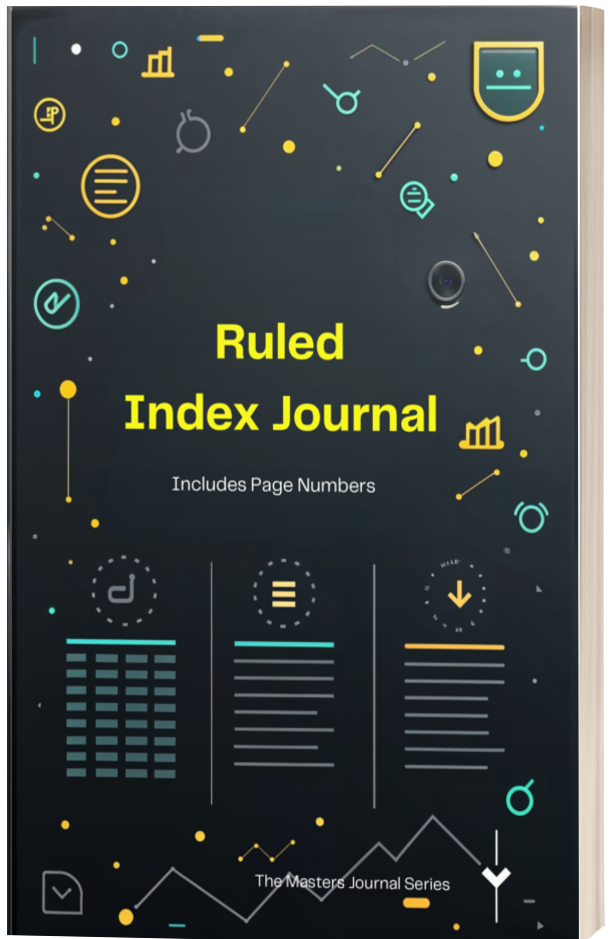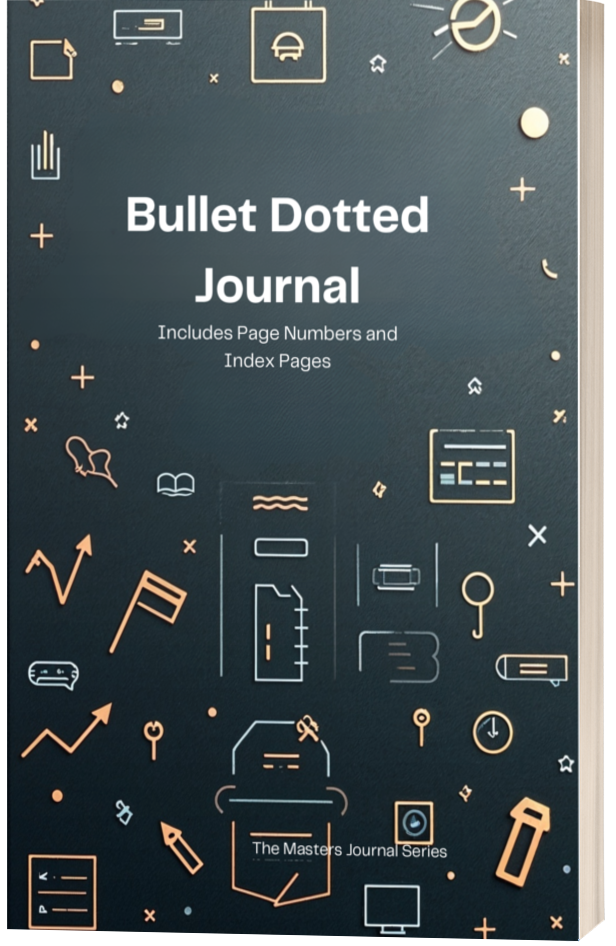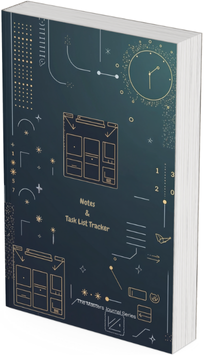Super User
Analytical Thinking Tools: Breaking Down Problems for Better Living
**Analytical Thinking Tools: Breaking Down Problems for Better Solutions**
Analytical thinking tools are powerful frameworks that help organize, dissect, and understand complex problems. By using these tools, you can uncover root causes, evaluate options, and make better decisions. In this article, we’ll explore three widely used analytical thinking tools: Flowcharts, Fishbone Diagrams, and Force Field Analysis.
---
**1. Flowcharts**
Flowcharts are visual representations of a process or workflow. They use symbols such as rectangles, diamonds, and arrows to map out steps, decisions, and outcomes. Flowcharts are particularly useful for:
- **Problem-solving**: Visualizing where bottlenecks or inefficiencies occur.
- **Decision-making**: Clarifying options and consequences.
- **Communication**: Explaining processes to teams or stakeholders.
Example**: Mapping the steps in a customer service process to identify delays or areas for improvement.
---
**2. Fishbone Diagram (Ishikawa Diagram)**
The Fishbone Diagram, also known as the Cause-and-Effect Diagram, helps identify the root causes of a specific problem. It organizes potential causes into categories, such as People, Processes, Materials, and Environment, branching out from a central problem.
**How to Use**:
1. Clearly define the problem (e.g., "Low sales").
2. Draw a horizontal line with the problem at the end.
3. Add categories as branches and brainstorm potential causes under each.
**Benefits**:
- Encourages systematic thinking.
- Highlights relationships between different causes.
- Provides a structured approach for root cause analysis.
---
**3. Force Field Analysis**
Force Field Analysis evaluates the factors that support or hinder a change or decision. It involves listing driving forces (positive factors) and restraining forces (negative factors) and analyzing their strength.
**Steps**:
1. Define the change or decision you’re analyzing.
2. List driving forces (e.g., cost savings, improved efficiency).
3. List restraining forces (e.g., resistance to change, high initial costs).
4. Assign a score to each factor to determine the overall feasibility of the change.
**Applications**:
- Change management.
- Risk assessment.
- Strategic decision-making.
---
**Why Use Analytical Thinking Tools?**
1. **Clarity**: They break complex problems into manageable components.
2. **Objectivity**: Provide a structured approach to problem-solving.
3. **Collaboration**: Facilitate teamwork by visualizing issues and solutions.
4. **Efficiency**: Save time and effort by targeting the right areas for action.
---
**How to Get Started**
- Begin with a clear definition of your problem or objective.
- Choose the right tool based on the complexity and nature of the issue.
- Involve your team to gather diverse perspectives and ensure accuracy.
- Regularly update and refine your analysis as new information emerges.
These tools empower individuals and teams to think critically, identify root causes, and make informed decisions. Incorporate them into your problem-solving arsenal to improve outcomes and drive success.
Creating Thinking Tools: Unlocking your Inner Innovator
Creative Thinking Tools: Unlocking Your Inner Innovator
Creative thinking is a skill that fuels innovation, problem-solving, and fresh ideas. While creativity often feels spontaneous, there are structured tools and techniques that can help spark it intentionally. In this article, we’ll explore three powerful creative thinking tools: the SCAMPER Technique, Random Word Generator, and Lateral Thinking Puzzles.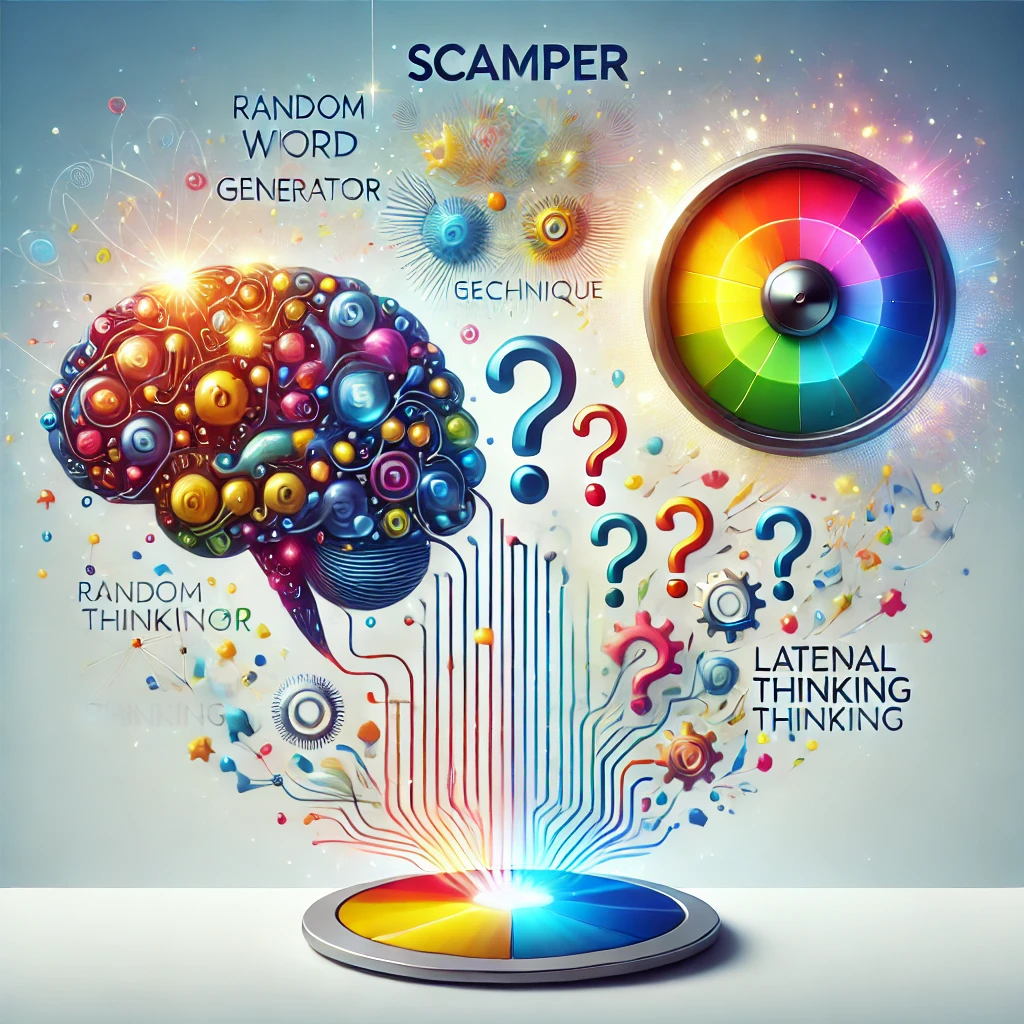
---
**1. SCAMPER Technique**
The SCAMPER technique is a brainstorming tool that encourages you to think differently about problems by applying seven distinct strategies:
- **Substitute**: Replace one element of the problem with another.
- **Combine**: Merge two ideas or concepts to create something new.
- **Adapt**: Modify an existing solution to fit the situation.
- **Modify (or Magnify)**: Change the scale, shape, or attributes of an element.
- **Put to Another Use**: Reimagine how something could be used.
- **Eliminate**: Remove parts of the problem to simplify it.
- **Reverse (or Rearrange)**: Change the order or perspective to discover new possibilities.
For example, if you’re designing a new product, SCAMPER can guide you through alternative ideas by prompting questions like, “What happens if we substitute one material for another?” or “Can we eliminate this feature to make it more user-friendly?”
---
**2. Random Word Generator**
Sometimes, creativity stalls when you’re trapped in familiar thought patterns. A random word generator helps break this cycle by introducing unrelated ideas into your brainstorming process. Here’s how it works:
1. Use a random word generator (or simply pick a word from a dictionary).
2. Write down the word and think about how it might relate to your problem.
3. Allow the association to guide new ideas or directions.
For example, if the random word is “bridge” and you’re solving a communication problem, you might brainstorm ideas about “bridging gaps,” creating “pathways,” or building “connections.”
---
**3. Lateral Thinking Puzzles**
Lateral thinking puzzles challenge traditional, linear thought by encouraging you to approach problems from unconventional angles. These puzzles often involve seemingly paradoxical or ambiguous scenarios that require creative solutions.
Example:
**Puzzle:** A man enters a bar, orders a glass of water, and the bartender points a gun at him. The man says, “Thank you,” and leaves. Why?
**Solution:** The man had hiccups, and the bartender startled him with the gun to cure them.
These exercises train your brain to think beyond obvious solutions and uncover hidden possibilities.
---
**Benefits of Creative Thinking Tools**
1. **Enhanced Problem-Solving**: Encourages looking at challenges from multiple angles.
2. **Increased Innovation**: Helps generate fresh, out-of-the-box ideas.
3. **Better Collaboration**: Facilitates group brainstorming and diverse input.
4. **Personal Growth**: Develops adaptability and mental flexibility.
---
**How to Get Started**
1. Pick one of the tools and practice applying it to a small challenge.
2. Use these techniques in group settings to harness collective creativity.
3. Reflect on what worked and refine your approach for future use.
Creative thinking isn’t just for artists or inventors—it’s a powerful skill anyone can cultivate. With tools like SCAMPER, Random Word Generators, and Lateral Thinking Puzzles, you can unlock your full creative potential and tackle challenges with fresh perspectives.
Decision-Making Tools: Enhancing Clarity and Confidence in Choices
Decision-Making Tools: Enhancing Clarity and Confidence in Choices
Making decisions, whether personal or professional, can be daunting. Thankfully, structured decision-making tools can help you evaluate options and choose the best course of action. In this article, we explore three powerful decision-making tools: the Decision Matrix, Cost-Benefit Analysis, and the Pareto Principle.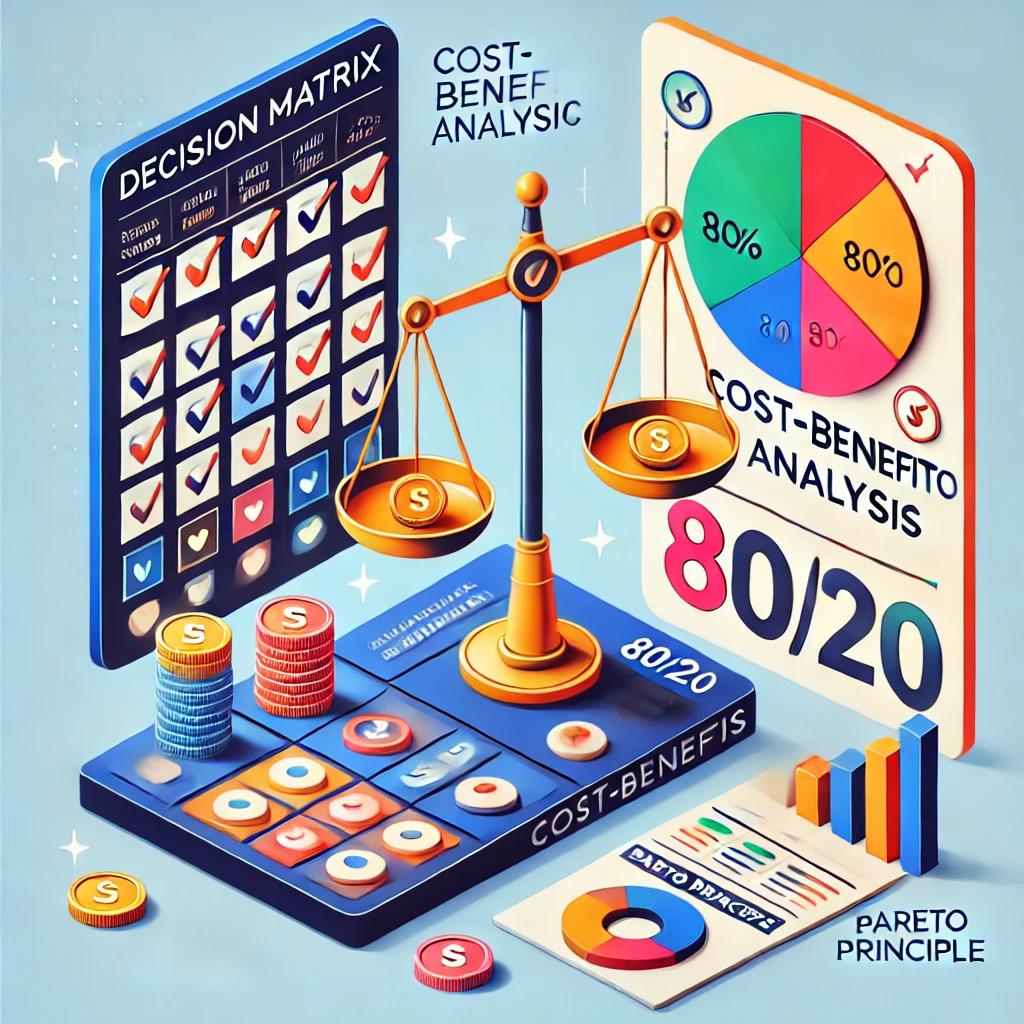
---
**1. Decision Matrix**
### **What is a Decision Matrix?**
A Decision Matrix, also known as a weighted scoring model, is a tool that evaluates multiple options against specific criteria. It assigns scores to each option based on how well it meets the criteria, making it easier to identify the best choice.
**How to Use It**
1. **Define Your Options**: List all possible choices.
2. **Identify Criteria**: Determine the factors that matter most in your decision.
3. **Assign Weights**: Prioritize criteria by assigning a weight to each (e.g., 1-10).
4. **Score Options**: Rate how well each option fulfills the criteria.
5. **Calculate Totals**: Multiply scores by their weights, then sum up the totals for each option.
### **Example**
You’re choosing between three project management tools based on cost, ease of use, and features.
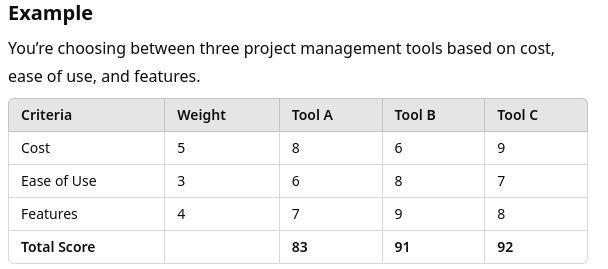
**Benefits**
- Provides a systematic approach to complex decisions.
- Ensures objectivity by quantifying subjective criteria.
- Highlights the trade-offs between options.
---
**2. Cost-Benefit Analysis**
**What is Cost-Benefit Analysis?**
Cost-Benefit Analysis (CBA) is a financial decision-making tool that compares the costs and benefits of a decision to determine its overall value. It helps you weigh the pros and cons in monetary terms.
### **How to Use It**
1. **List Costs**: Identify all potential expenses (e.g., money, time, resources).
2. **List Benefits**: Determine all potential gains (e.g., revenue, efficiency, satisfaction).
3. **Assign Monetary Values**: Quantify each cost and benefit where possible.
4. **Calculate Net Value**: Subtract total costs from total benefits to determine the net value.
**Example**
You’re deciding whether to invest in new software:
- **Costs**: Purchase price ($10,000), Training ($2,000), Maintenance ($1,000/year).
- **Benefits**: Time savings ($15,000/year), Increased accuracy ($5,000/year).
In one year, the net benefit is:
**($15,000 + $5,000) - ($10,000 + $2,000 + $1,000) = $7,000**
**Benefits**
- Simplifies financial comparisons.
- Ensures that decisions are cost-effective.
- Helps identify potential risks and rewards.
---
**3. Pareto Principle (80/20 Rule)**
**What is the Pareto Principle?**
The Pareto Principle states that 80% of outcomes come from 20% of efforts. Named after economist Vilfredo Pareto, this principle helps prioritize actions that yield the most significant results.
**How to Use It**
1. **Identify Key Factors**: Determine the areas where effort has the most impact.
2. **Focus Efforts**: Prioritize tasks, resources, or strategies that drive the majority of results.
3. **Analyze Results**: Continuously assess which actions contribute the most value.
**Example**
If a business finds that 80% of its revenue comes from 20% of its clients, it should focus on nurturing those key clients to maximize results.
**Benefits**
- Improves efficiency by focusing on high-impact areas.
- Helps eliminate wasteful efforts.
- Applies broadly to time management, business strategy, and personal goals.
---
**When to Use These Tools**
- **Decision Matrix**: Ideal for comparing multiple options against measurable criteria.
- **Cost-Benefit Analysis**: Best for financial or resource-based decisions.
- **Pareto Principle**: Effective for prioritizing tasks or identifying areas of focus.
---
**Conclusion**
Decision-making doesn’t have to be overwhelming. By leveraging tools like the Decision Matrix, Cost-Benefit Analysis, and Pareto Principle, you can approach decisions with clarity, objectivity, and confidence. These methods provide structured ways to evaluate options, prioritize efforts, and maximize outcomes, making them invaluable for both personal and professional use.
The Five Whys, Socratic Questioning, and SWOT Analysis
The Five Whys, Socratic Questioning, and SWOT Analysis: Tools for Critical Thinking and Problem-Solving
Effective problem-solving and decision-making often require structured approaches to break down complex issues. The Five Whys, Socratic Questioning, and SWOT Analysis are three powerful tools that can help you identify root causes, explore ideas deeply, and evaluate options strategically.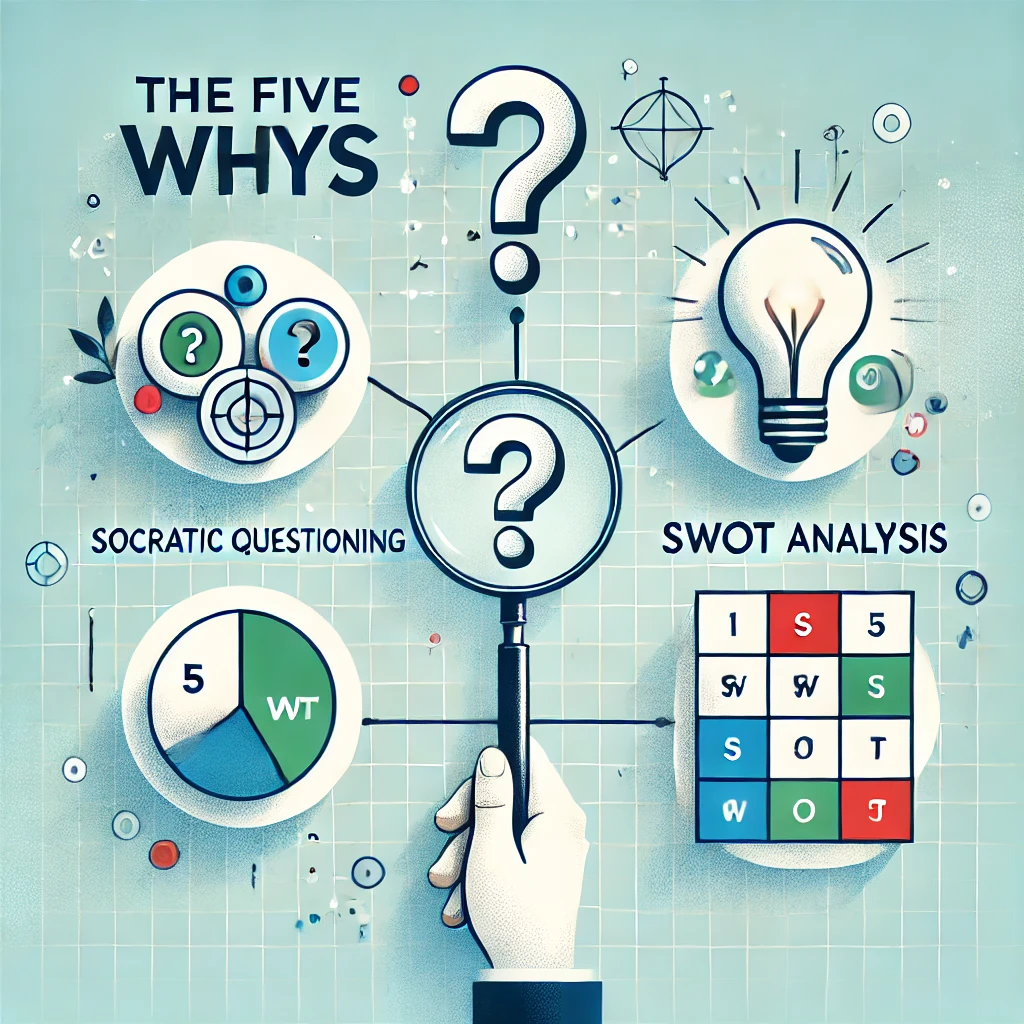
This article explains each method, its purpose, and how to use it effectively.
---
**1. The Five Whys**
**What is The Five Whys?**
The Five Whys is a simple but powerful problem-solving technique that helps you identify the root cause of an issue by repeatedly asking "Why?" Developed by Sakichi Toyoda, the founder of Toyota, this method is widely used in lean manufacturing and quality improvement.
**How to Use It**
1. **State the Problem Clearly**: Start with a clear and concise problem statement.
2. **Ask "Why?"**: Identify why the problem occurred.
3. **Repeat Up to Five Times**: For each answer, ask "Why?" again to uncover deeper layers of the issue.
4. **Stop at the Root Cause**: Once you find the fundamental reason, you can focus on resolving it.
**Example**
- **Problem**: The project deadline was missed.
1. **Why?** The team was behind schedule.
2. **Why?** Tasks took longer than expected.
3. **Why?** There was insufficient planning.
4. **Why?** The team lacked clear guidelines.
5. **Why?** Roles and responsibilities were not clearly defined.
- **Root Cause**: Poor role definition.
**Benefits**
- Simplifies complex problems.
- Focuses on root causes rather than symptoms.
- Encourages continuous improvement.
---
**2. Socratic Questioning**
**What is Socratic Questioning?**
Socratic Questioning is a disciplined method of asking and answering questions to stimulate critical thinking and uncover assumptions. Named after the Greek philosopher Socrates, this approach encourages deep exploration of ideas.
**How to Use It**
1. **Clarify Concepts**: Ask questions like "What do you mean by that?" or "Can you give an example?"
2. **Probe Assumptions**: Challenge beliefs with questions such as "What are you assuming?" or "Why do you think this is true?"
3. **Explore Reasons and Evidence**: Use inquiries like "What evidence supports this idea?" or "Are there alternative perspectives?"
4. **Investigate Implications**: Ask questions like "What are the consequences of this belief?" or "What if this assumption is wrong?"
5. **Reflect on the Process**: Encourage reflection with questions like "What did you learn from this discussion?" or "How does this influence your understanding?"
**Benefits**
- Enhances critical thinking and self-awareness.
- Encourages open dialogue and exploration.
- Helps identify biases and gaps in reasoning.
---
**3. SWOT Analysis**
**What is SWOT Analysis?**
SWOT Analysis is a strategic planning tool used to evaluate an organization, project, or individual’s Strengths, Weaknesses, Opportunities, and Threats. It provides a comprehensive view of internal and external factors affecting a situation.
**How to Use It**
1. **Create a Grid**: Divide your page into four quadrants.
2. **List Strengths**: Identify internal advantages, such as resources, skills, or achievements.
3. **List Weaknesses**: Recognize internal challenges or limitations.
4. **List Opportunities**: Explore external possibilities, like market trends or partnerships.
5. **List Threats**: Identify external risks, such as competition or regulatory changes.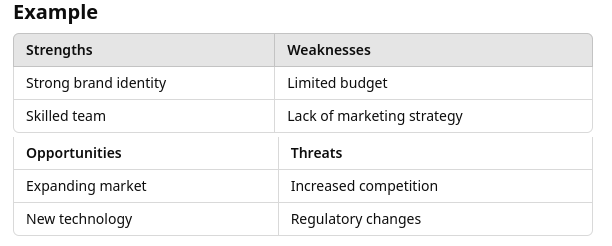
**Benefits**
- Provides a balanced perspective.
- Helps identify areas for improvement and growth.
- Guides strategic decision-making.
---
**Conclusion**
The Five Whys, Socratic Questioning, and SWOT Analysis are essential tools for critical thinking and problem-solving. Each method serves a unique purpose:
- The Five Whys helps you uncover root causes.
- Socratic Questioning fosters deeper understanding and exploration.
- SWOT Analysis provides a comprehensive evaluation of strengths, weaknesses, opportunities, and threats.
By mastering these tools, you can approach challenges with clarity, creativity, and confidence.
Mind Mapping: A Visual Tool for Better Thinking and Organization
Mind Mapping: A Visual Tool for Better Thinking and Organization
Mind mapping is a powerful visual thinking tool that helps you organize information, generate ideas, and see connections between concepts. By combining structure and creativity, mind mapping engages both sides of the brain, making it easier to process and retain information.
In this article, we explore the benefits of mind mapping, how to create a mind map, and practical ways to use it in your personal and professional life.
---
What is a Mind Map?
A mind map is a diagram that organizes information hierarchically around a central idea. Starting from a main concept, you branch out into related topics, subtopics, and details using keywords, images, and colors. This technique mirrors the way our brain naturally works, making it an effective tool for brainstorming, planning, and problem-solving.
---
Benefits of Mind Mapping
1. **Improves Clarity**: Visualizing ideas helps you break down complex topics into manageable pieces.
2. **Boosts Creativity**: The nonlinear structure encourages out-of-the-box thinking.
3. **Enhances Memory**: Using colors, images, and associations improves recall.
4. **Saves Time**: Mind maps help you summarize and organize information quickly.
5. **Facilitates Problem-Solving**: Seeing the "big picture" makes it easier to identify solutions.
---
How to Create a Mind Map
Follow these steps to create an effective mind map:
1. **Start with the Central Idea**
Write your main topic or goal in the center of the page and circle it. This will be the anchor for all related ideas.
2. **Add Main Branches**
Draw lines radiating out from the central idea and label each with a key category or theme. Use single words or short phrases for clarity.
3. **Expand with Subtopics**
From each main branch, draw smaller branches to add subtopics and details. Continue breaking these down as needed.
4. **Use Colors and Images**
Incorporate colors, symbols, and images to make your mind map more engaging and memorable.
5. **Keep it Simple**
Avoid overcrowding your mind map. Focus on capturing essential ideas and organizing them logically.
---
Practical Applications of Mind Mapping
1. **Brainstorming**
Use a mind map to explore ideas for a project, essay, or creative endeavor. Let your thoughts flow freely and build connections.
2. **Planning**
Plan your goals, tasks, and timelines for personal or professional projects. Mind maps are especially useful for event planning and outlining complex tasks.
3. **Note-Taking**
Summarize lectures, books, or meetings in a structured format. Mind maps make it easier to review and retain key points.
4. **Problem-Solving**
Break down challenges into smaller components and identify potential solutions. Mind mapping encourages critical thinking and collaboration.
5. **Learning and Studying**
Organize information for exams or presentations. The visual format makes studying more effective and less overwhelming.
6. **Decision-Making**
Map out pros, cons, and possible outcomes of decisions to weigh your options clearly.
---
Tools for Mind Mapping
1. **Pen and Paper**: A traditional and versatile way to create mind maps.
2. **Digital Tools**: Platforms like MindMeister, XMind, and Coggle offer interactive features and templates.
3. **Whiteboards**: Great for collaborative mind mapping sessions in teams or classrooms.
---
Tips for Effective Mind Mapping
- **Focus on Keywords**: Use concise words or phrases to keep the map clean.
- **Use Hierarchies**: Organize information from general to specific for better clarity.
- **Experiment**: Try different layouts and styles to find what works best for you.
- **Review and Update**: Revisit your mind map regularly to refine and expand it.
---
Conclusion
Mind mapping is a versatile tool that enhances creativity, organization, and problem-solving. Whether you’re brainstorming, planning, or learning, this visual method can transform how you think and work. Start creating mind maps today and unlock the full potential of your ideas.
What are Thinking Tools?
What Are Thinking Tools?
Thinking tools are strategies, frameworks, or instruments designed to enhance cognitive processes such as problem-solving, decision-making, creativity, and analysis. These tools help structure thought, improve clarity, and generate insights, making them invaluable for personal development, education, and professional use.
---
**List of Thinking Tools**
**1. Brainstorming Tools**
- **Mind Mapping**: Visual diagrams that connect ideas around a central concept (e.g., MindMeister, XMind).
- **Idea Boards**: Physical or digital boards for jotting down and organizing ideas (e.g., Trello, Notion).
**2. Critical Thinking Tools**
- **The Five Whys**: A questioning method to uncover the root cause of a problem by asking \"why\" repeatedly.
- **Socratic Questioning**: A method of challenging assumptions and exploring deeper truths.
- **SWOT Analysis**: A structured framework for evaluating Strengths, Weaknesses, Opportunities, and Threats.
**3. Decision-Making Tools**
- **Decision Matrix**: A tool to evaluate multiple options based on set criteria (e.g., weighted scoring models).
- **Cost-Benefit Analysis**: A method to weigh the pros and cons of a decision.
- **Pareto Principle (80/20 Rule)**: Focus on the 20% of activities that yield 80% of the results.
**4. Creative Thinking Tools**
- **SCAMPER Technique**: A checklist for generating ideas by Substituting, Combining, Adapting, Modifying, Putting to other uses, Eliminating, and Reversing elements.
- **Random Word Generator**: A tool for sparking new ideas by associating random words with a problem.
- **Lateral Thinking Puzzles**: Exercises to encourage out-of-the-box thinking.
**5. Analytical Thinking Tools**
- **Flowcharts**: Diagrams that represent processes and decisions (e.g., Lucidchart, Draw.io).
- **Fishbone Diagram (Ishikawa)**: A tool to analyze cause-and-effect relationships.
- **Force Field Analysis**: A method to visualize the factors that support or hinder change.
**6. Visualization Tools**
- **Kanban Boards**: Tools to manage tasks visually, using columns for workflow stages (e.g., Asana, Jira).
- **Bubble Maps**: Tools to explore relationships between concepts.
- **Gantt Charts**: Tools to plan and track project timelines.
**7. Reflection and Introspection Tools**
- **Journaling**: Writing exercises to explore thoughts and emotions.
- **Gratitude Logs**: Lists or notes focused on things you are grateful for.
- **Meditation Apps**: Tools like Calm or Headspace to foster mindfulness and clarity.
**8. Problem-Solving Tools**
- **Root Cause Analysis**: Techniques like cause mapping to pinpoint the source of issues.
- **Six Thinking Hats**: A method by Edward de Bono to look at problems from multiple perspectives (logic, emotion, creativity, etc.).
- **Rubber Duck Debugging**: Explaining a problem aloud to clarify thoughts and uncover solutions.
**9. Communication and Collaboration Tools**
- **Dialogue Mapping**: Visualizing discussions to organize thoughts and find common ground.
- **Concept Mapping**: A diagram tool for structuring knowledge and identifying key relationships.
- **Shared Digital Workspaces**: Tools like Miro or MURAL for collaborative brainstorming.
**10. Cognitive Bias Awareness Tools**
- **Debiasing Checklists**: Frameworks to identify and mitigate biases in thinking.
- **Cognitive Bias Codex**: A visual representation of biases to recognize and avoid them.
- **Pre-Mortem Analysis**: Imagining potential failures before they occur to prevent them.
---
**How to Use Thinking Tools**
1. **Identify Your Need**: Clarify whether you’re solving a problem, generating ideas, or reflecting on a situation.
2. **Select the Right Tool**: Choose a tool suited to the task (e.g., use mind mapping for brainstorming or SWOT for decision-making).
3. **Apply Consistently**: Use the tool regularly to develop mastery and make it part of your workflow.
4. **Reflect on Outcomes**: Evaluate the effectiveness of the tool and adjust your approach as needed.
Thinking tools are adaptable and can be combined to suit complex scenarios.
20 Motivational Quotes on Thought and Thinking
20 Motivational Quotes on Thought and Thinking
Thoughts have the power to shape our reality, influence our actions, and determine our success. Here are 20 motivational quotes that inspire deeper thinking and a positive mindset to help you unlock your potential.
---
**Quotes About the Power of Thought**
1. "What you think, you become. What you feel, you attract. What you imagine, you create." – Buddha
2. "Change your thoughts and you change your world." – Norman Vincent Peale
3. "The mind is everything. What you think you become." – Marcus Aurelius
4. "Your life is a reflection of your thoughts. If you change your thinking, you can change your life." – Brian Tracy
5. "You have power over your mind—not outside events. Realize this, and you will find strength." – Marcus Aurelius
---
**Quotes About Positive Thinking**
6. "A positive mind finds a way it can be done; a negative mind looks for all the ways it can’t be done." – Napoleon Hill
7. "Optimism is the faith that leads to achievement. Nothing can be done without hope and confidence." – Helen Keller
8. "Positive thinking will let you do everything better than negative thinking will." – Zig Ziglar
9. "Keep your face always toward the sunshine, and shadows will fall behind you." – Walt Whitman
10. "Your mind is a powerful thing. When you fill it with positive thoughts, your life will start to change." – Unknown
---
**Quotes About Deep Thinking and Reflection**
11. "The unexamined life is not worth living." – Socrates
12. "Five percent of the people think; ten percent of the people think they think; and the other eighty-five percent would rather die than think." – Thomas A. Edison
13. "Thinking is the hardest work there is, which is probably the reason why so few engage in it." – Henry Ford
14. "The world as we have created it is a process of our thinking. It cannot be changed without changing our thinking." – Albert Einstein
15. "Spend eighty percent of your time focusing on the opportunities of tomorrow rather than the problems of yesterday." – Brian Tracy
---
**Quotes About Creative and Expansive Thinking**
16. "Creativity is intelligence having fun." – Albert Einstein
17. "The mind is not a vessel to be filled but a fire to be kindled." – Plutarch
18. "You can’t use up creativity. The more you use, the more you have." – Maya Angelou
19. "Great things are not done by impulse but by a series of small things brought together." – Vincent Van Gogh
20. "Think big and don’t listen to people who tell you it can’t be done. Life’s too short to think small." – Tim Ferriss
---
**How to Use These Quotes**
- Write one quote in your journal each morning to inspire your day.
- Create a vision board featuring quotes that resonate with your goals.
- Reflect on a quote and how it applies to your current situation during moments of self-reflection.
- Share these quotes with others to spark meaningful conversations about thought and growth.
---
Conclusion
Thoughts are the architects of our destiny. By nurturing positive, expansive, and reflective thinking, you can unlock creativity, resilience, and success in all areas of your life. Let these quotes inspire you to harness the power of your mind and take meaningful steps toward a brighter future.
20 Inspirational Quotes for Self-Improvement and Resilience
20 Inspirational Quotes for Self-Improvement and Resilience
Self-improvement and resilience are vital for navigating life’s challenges and achieving personal growth. Words of wisdom can serve as powerful reminders of your strength and potential, inspiring you to persevere and thrive. Here are 20 inspirational quotes to motivate your journey toward self-improvement and resilience.
---
**Quotes for Self-Improvement**
1. "Success is not the result of spontaneous combustion. You must set yourself on fire." – Arnold H. Glasow
2. "Don’t wish it were easier. Wish you were better." – Jim Rohn
3. "The secret of getting ahead is getting started." – Mark Twain
4. "You are never too old to set another goal or to dream a new dream." – C.S. Lewis
5. "What you do today can improve all your tomorrows." – Ralph Marston
6. "Small daily improvements are the key to staggering long-term results." – Robin Sharma
7. "Believe you can and you're halfway there." – Theodore Roosevelt
8. "Self-discipline is the bridge between goals and accomplishment." – Jim Rohn
9. "Personal growth is not a matter of learning new information but unlearning old limits." – Alan Cohen
10. "Your life does not get better by chance, it gets better by change." – Jim Rohn
---
**Quotes for Resilience**
11. "The oak fought the wind and was broken, the willow bent when it must and survived." – Robert Jordan
12. "Life doesn’t get easier or more forgiving; we get stronger and more resilient." – Steve Maraboli
13. "Rock bottom became the solid foundation on which I rebuilt my life." – J.K. Rowling
14. "Although the world is full of suffering, it is also full of the overcoming of it." – Helen Keller
15. "Fall seven times, stand up eight." – Japanese Proverb
16. "Courage doesn’t always roar. Sometimes courage is the quiet voice at the end of the day saying, 'I will try again tomorrow.'" – Mary Anne Radmacher
17. "Resilience is knowing that you are the only one that has the power and the responsibility to pick yourself up." – Mary Holloway
18. "Do not judge me by my success, judge me by how many times I fell down and got back up again." – Nelson Mandela
19. "A river cuts through rock not because of its power but because of its persistence." – James N. Watkins
20. "Hardships often prepare ordinary people for an extraordinary destiny." – C.S. Lewis
---
**How to Use These Quotes**
1. **Daily Reminders**: Write a quote that resonates with you on a sticky note or in your planner to reflect on throughout the day.
2. **Journaling Prompts**: Use these quotes as inspiration for journal entries about your personal growth and resilience.
3. **Affirmation Support**: Pair these quotes with daily affirmations to reinforce your mindset for success and perseverance.
4. **Inspiration Boards**: Add these quotes to a vision board or digital wallpaper to keep them in sight.
---
Conclusion
Inspirational quotes are not just words; they are tools to reignite your determination, strengthen your resolve, and remind you of your boundless potential. Let these quotes inspire you to embrace self-improvement and resilience as daily practices, empowering you to overcome challenges and thrive in every aspect of life.
Breaking Down Self-Control: A Blueprint for Reconstruction
Breaking Down Self-Control: A Blueprint for Reconstruction
The journey to better self-control begins with understanding its core components. Like dismantling an old building to construct something stronger, we must first break down self-control into its fundamental elements before rebuilding a more powerful version of ourselves.
Component 1: Emotional Regulation
Current State Assessment:
- How do you typically react to stress?
- What emotions trigger impulsive behavior?
- When do you feel most in control?
Rebuilding Strategy:
- Develop emotional awareness through daily check-ins
- Create a personal trigger-response map
- Build a toolkit of emotional regulation techniques
- Practice mindful response delays
Component 2: Decision-Making Framework
Current State Assessment:
- When do you make your best/worst decisions?
- What influences your choice-making process?
- How often do you act on impulse?
Rebuilding Strategy:
- Implement the 10-minute rule for important decisions
- Create decision templates for common situations
- Establish personal policies for recurring choices
- Practice decision journaling
Component 3: Environmental Control
Current State Assessment:
- What in your environment triggers poor choices?
- Where do you feel most/least in control?
- How does your space influence your behavior?
Rebuilding Strategy:
- Redesign your physical space to support goals
- Remove or limit access to temptations
- Create zones for specific activities
- Set up success triggers in your environment
Component 4: Energy Management
Current State Assessment:
- When is your willpower strongest/weakest?
- How do sleep and nutrition affect your control?
- What depletes your self-control fastest?
Rebuilding Strategy:
- Map your energy patterns throughout the day
- Schedule important tasks during peak willpower hours
- Create energy renewal practices
- Develop a sustainable sleep routine
Component 5: Habit Formation
Current State Assessment:
- Which habits support/undermine your control?
- What triggers your automatic behaviors?
- How do your routines affect your self-control?
Rebuilding Strategy:
- Identity small habits to replace problematic ones
- Create implementation intentions
- Build habit stacks around existing routines
- Track habit progress systematically
The Reconstruction Process
Phase 1: Foundation Building (Weeks 1-2)
- Self-awareness development
- Pattern recognition
- Baseline establishment
- Goal setting
Phase 2: Framework Construction (Weeks 3-4)
- New habit implementation
- Environment modification
- Routine establishment
- Support system creation
Phase 3: Strengthening (Weeks 5-8)
- Practice new responses
- Refine strategies
- Build complexity
- Increase challenges
Phase 4: Maintenance and Growth (Ongoing)
- Regular assessment
- Strategy adjustment
- Skill expansion
- Continuous improvement
Key Principles for Rebuilding
1. Progressive Overload
- Start with manageable challenges
- Gradually increase difficulty
- Build confidence through success
- Maintain sustainable progress
2. System Integration
- Connect all components
- Create supporting frameworks
- Establish backup plans
- Develop mutual reinforcement
3. Adaptive Response
- Monitor effectiveness
- Adjust as needed
- Learn from setbacks
- Evolve strategies
4. Sustainable Practice
- Focus on long-term success
- Build realistic expectations
- Create maintainable systems
- Plan for ongoing development
Moving Forward
Remember that rebuilding self-control is not about achieving perfection but creating a stronger, more resilient system. Each component strengthens the others, creating a comprehensive framework for better self-management.
Your Next Steps:
1. Choose one component to focus on first
2. Assess your current state honestly
3. Select appropriate rebuilding strategies
4. Begin implementation
5. Track and adjust as needed
The process of breaking down and rebuilding self-control takes time, but each small improvement creates momentum toward lasting change. Start with one component, master it, then move to the next. Your future self will thank you for the foundation you're building today.
Daily Self-Control Journal
DAILY SELF-CONTROL JOURNAL EXAMPLE
Date: _____________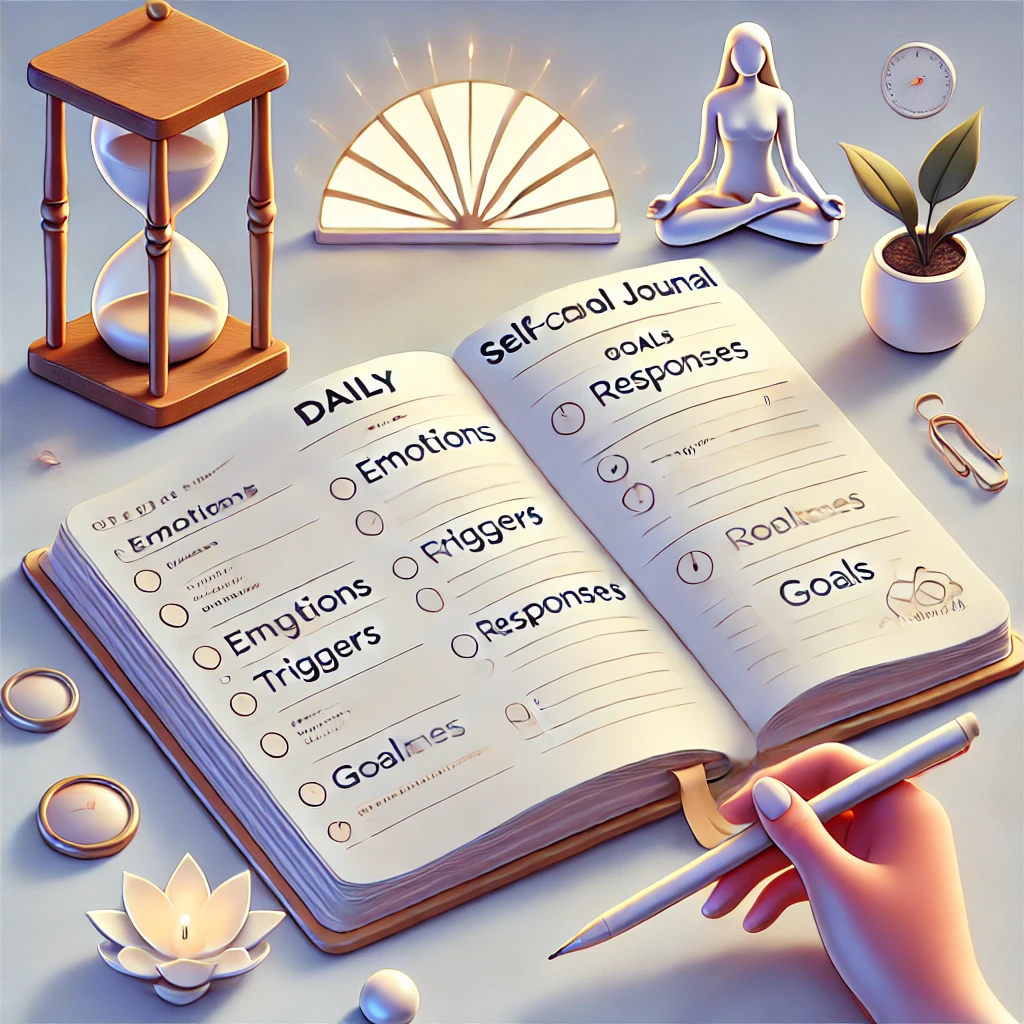
Energy Level (1-10): _____
Hours of Sleep: _____
Morning Reflection:
1. My main triggers for impulsive behavior today might be:
__________________________
__________________________
2. Today I commit to controlling:
__________________________
3. My strategy for staying in control will be:
__________________________
Evening Review:
Trigger Tracking:
• What triggered impulsive behavior today?
• How did I respond?
• What worked/didn't work?
Success Scale (1-10):
• Emotional Control: ___
• Food Choices: ___
• Time Management: ___
• Money Decisions: ___
• Social Media Usage: ___
Daily Prompts:
1. Today's biggest self-control challenge was:
__________________________
2. I'm proud that I:
__________________________
3. I could have handled better:
__________________________
4. Tomorrow, I will:
__________________________
Weekly Review Prompts:
1. Patterns I noticed this week:
__________________________
2. Most effective strategies:
__________________________
3. Areas needing improvement:
__________________________
4. Next week's focus:
__________________________
Habit Tracker:
□ Meditation
□ Exercise
□ Healthy Eating
□ Screen Time Limits
□ Spending Control
□ [Personal Habit]
Additional Journal Prompts:
Emotional Awareness:
• What emotions led to loss of control?
• How did I manage these emotions?
• What coping strategies worked best?
Decision Analysis:
• What decisions tested my self-control today?
• How did I handle decision fatigue?
• What could I automate or simplify?
Environment Check:
• Did my environment support or challenge my self-control?
• What changes could make self-control easier?
• What triggers can I remove?
Progress Reflection:
• How am I stronger than yesterday?
• What new strategies did I discover?
• What small wins can I celebrate?
Monthly Review:
• Major breakthroughs
• Consistent challenges
• Strategy adjustments needed
• Goals for next month
- Audio Articles
- Audio Articles 1
- Audio Articles 2
- Audio Articles 3
- Audio Articles 4
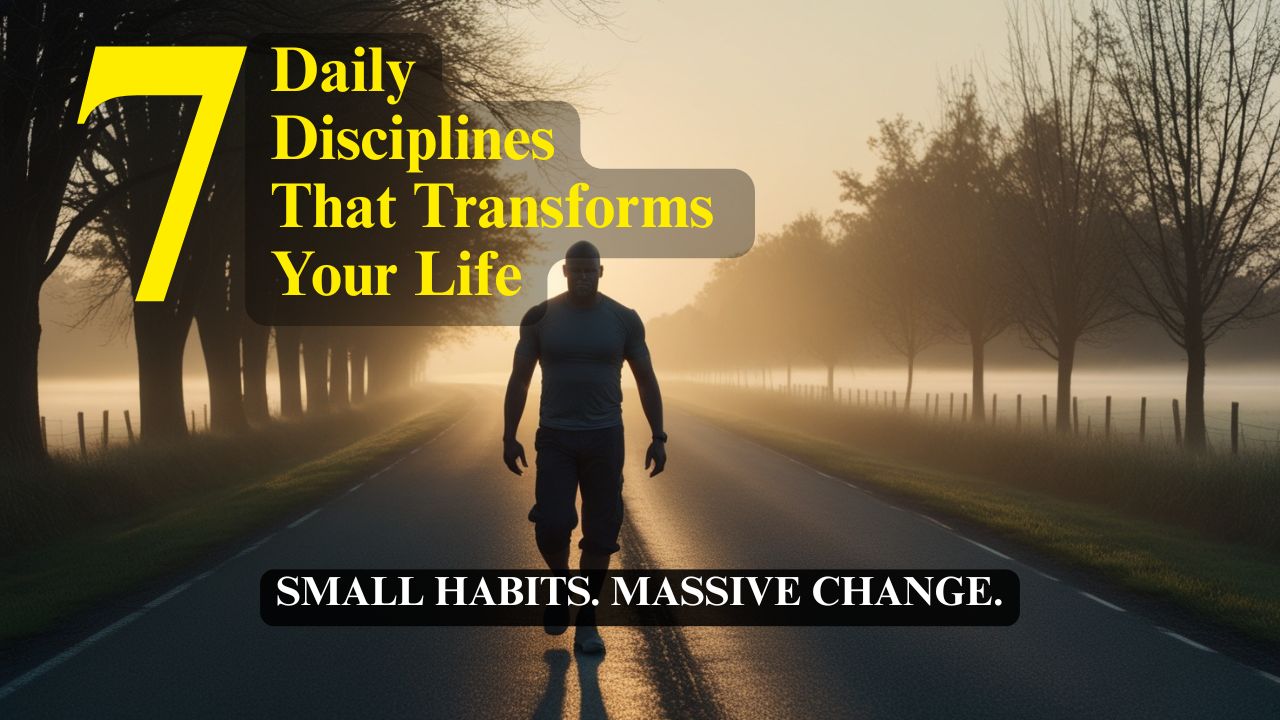
7 Daily Disciplines That Transform Your Life
The power to act with intention, to align your actions with your values, and to move steadily toward a life of purpose—even on days you don't feel like it.
Read Full Article
How to Build Unbreakable Discipline
Discipline is built—habit by habit, choice by choice, day by day. And the most powerful kind? The kind that doesn’t crack under pressure. The kind that becomes part of who you are.
Read Full Article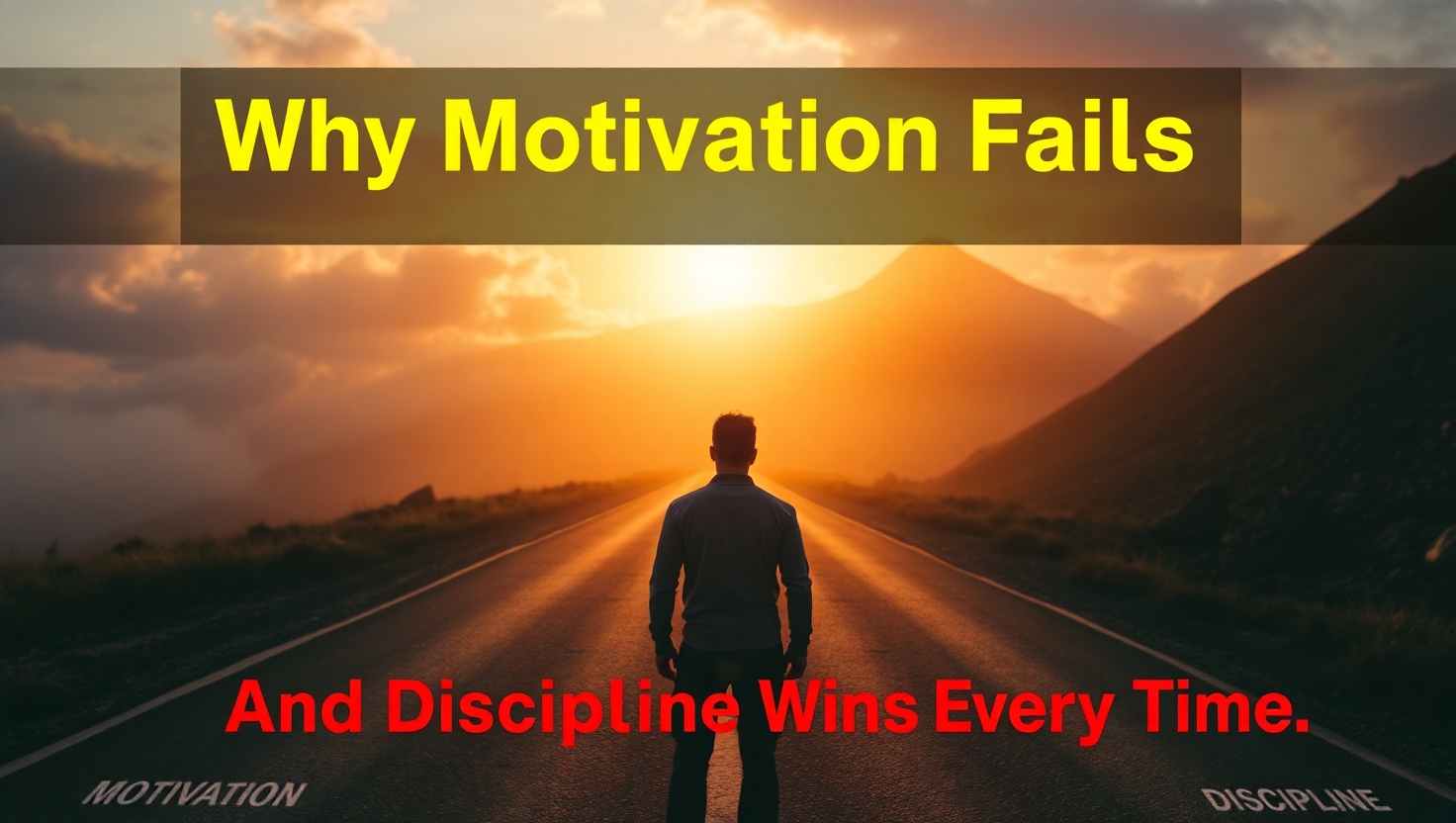
Why Motivation Fails And Discipline Wins Every Time
We all love the feeling of motivation—that surge of energy, that rush of inspiration that makes everything seem possible. But here’s the problem: motivation is unreliable. It’s emotional. It comes and goes. And if your goals rely on you “feeling like it,” you’re already in trouble.
Read Full Article
Discipline Over Desire
Desire is loud. It burns bright, talks fast, and loves to dream. But desire alone doesn't achieve much. Every person has desires. Very few have the discipline to bring them to life.
Read Full Article
The Science of Sticking
If you've ever tried to build a new habit, you've probably heard that it takes 21 days. This number gets thrown around so often that it feels like scientific fact.
Read Full Article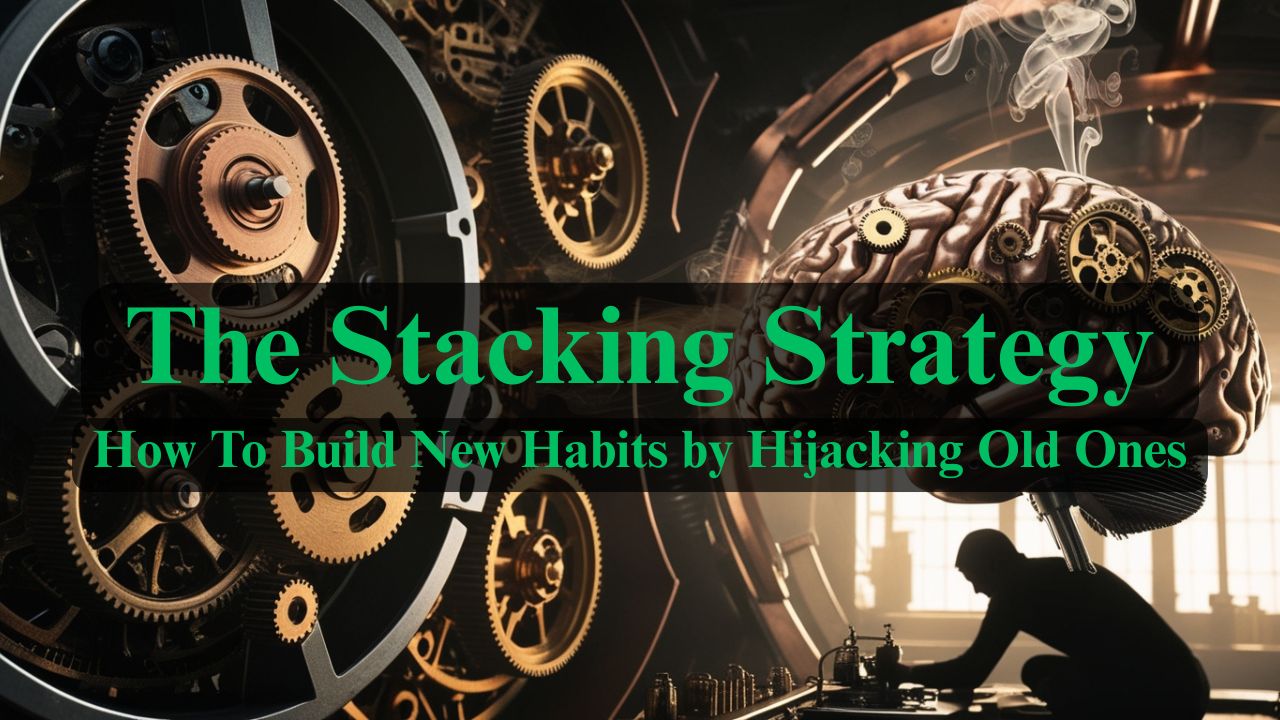
The Stacking Strategy
What if I told you that the habits you already have—even the ones you consider "bad"—could become the secret weapons for building the habits you want?
Read Full Article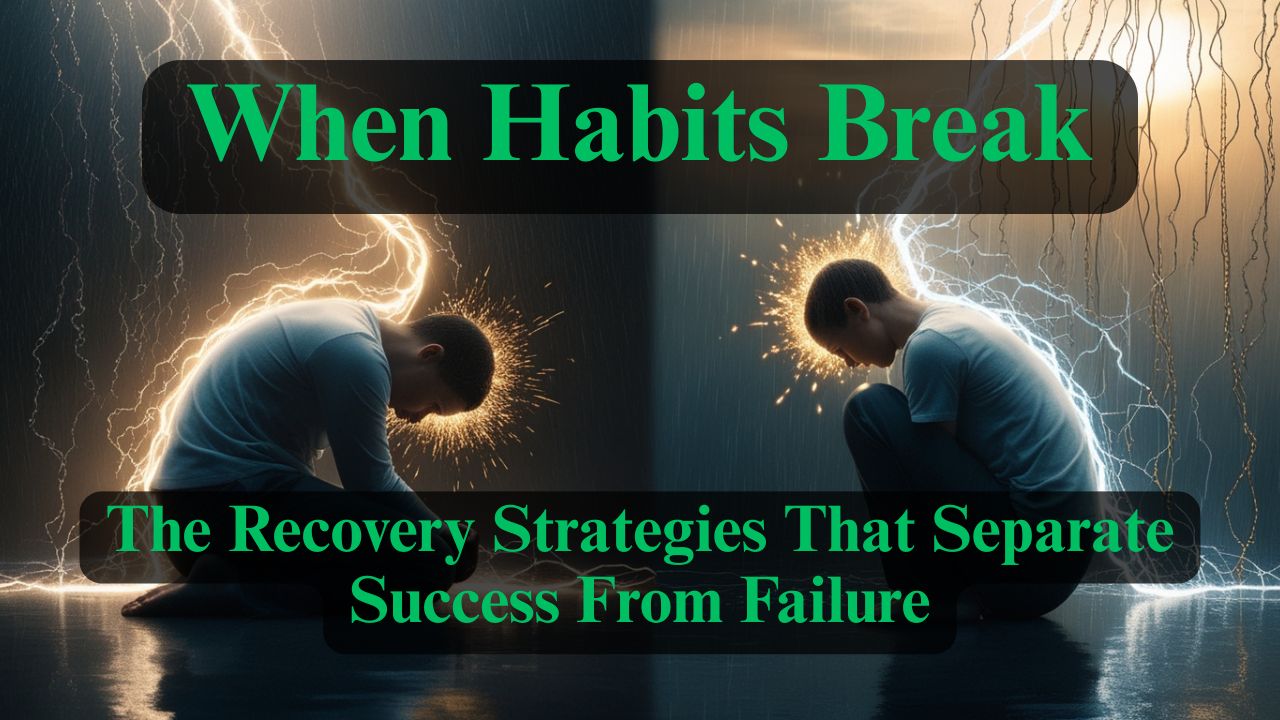
When Habits Fail - The Recovery Strategies That Separate Success From Failure
Here's what nobody tells you about building habits: you will fail. You'll miss days. You'll fall off track. You'll have weeks where everything falls apart.
Read Full Article
The Ultimate System - Designing a Life Where Good Habits Are Inevitable
You've learned to recognize habits, understand their formation timeline, stack them strategically, and recover from setbacks.
Read Full Article
